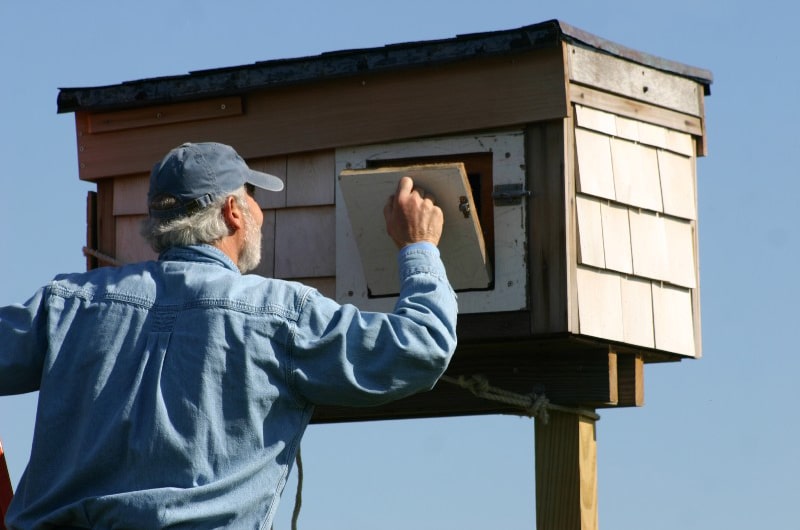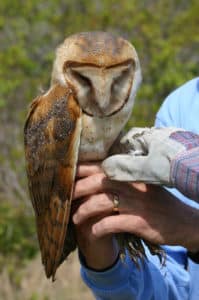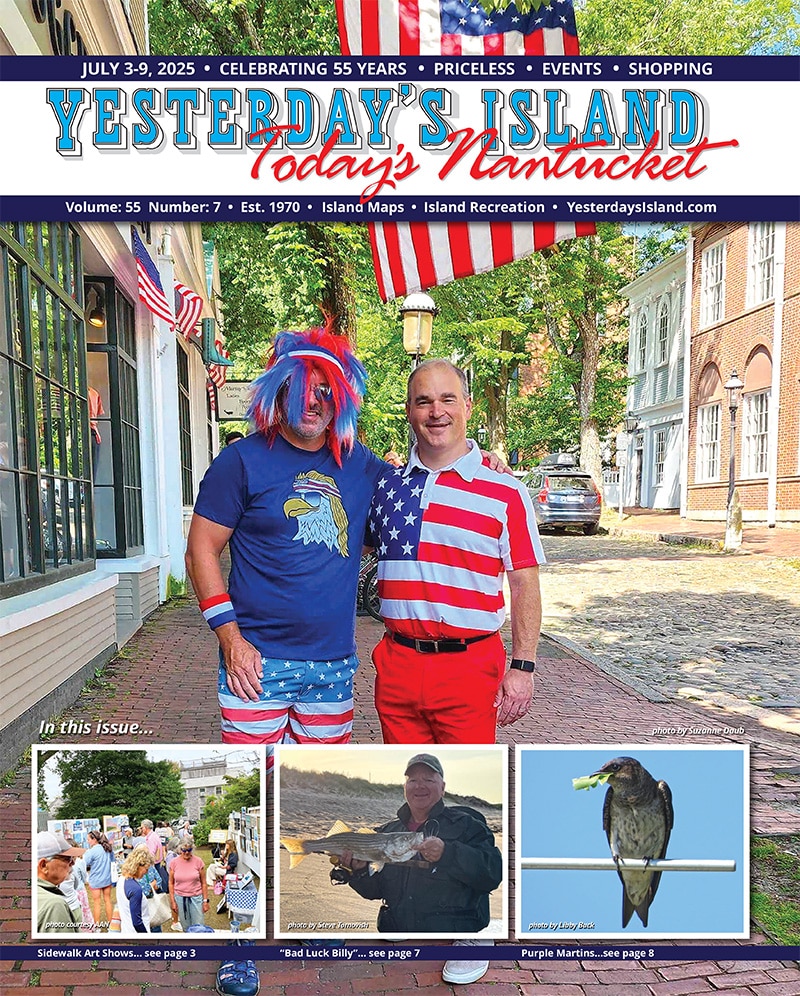~ by Katherine Brooks Maria Mitchell Association ~
Have you heard a piercing shriek in the night accompanied by a flurry of white light? Although it sounds like the making of a summercamp ghost story, what you might be observing is the barn owl – unique in its aesthetics with a white belly, heart-shaped face, hairless legs, and unmistakable screech. It does not “hoot” as many owls do but instead makes short and shrill screams, hisses, and clicks. It’s an unmistakable sound.

Nantucket is the northernmost habitat that the barn owls migrate to due to the snow and cold. The barn owl loses heat because its legs have little feathering. Thus, the boxes that you see around the island are designed to keep out the elements and are built large enough for the owls to rear their young in a place of shelter and protection. Although the island has few predators; crows, severe cold, and rodents infected with rat poison are the biggest killers of this species. Nantucket is home to five species of owls but only two species, including the barn owl, breed here. Andrew McKenna-Foster, the Director of Natural Sciences at the Maria Mitchell Association, explains that tracking what is happening with the populations now, might help provide information that is useful for the future. McKenna-Foster states, “The more species you have, the more stable your ecosystem – it’s good to have different types of owls, and we want to keep this population around.”

With more than forty boxes on the Island and most of them registered as part of the research program, the boxes allow scientist at the Maria Mitchell Association to track and compile data on the owls. Andrews and ornithologist, Bob Kennedy, visit the boxes twice during the summer to record data on the already tagged owls and to band new owls with an aluminum band or “bracelet” issued by the Fish and Wildlife Service. Each individual band is marked with a number for tracking and is placed around the owl’s ankle. The bands stay on for life but do not affect or harm the owl. By visiting the barn owl boxes and banding the owls, the scientist at the Maria Mitchell Association are able to learn more information about mortality rates, habitat patterns, and population. This last year, the Maria Mitchell Association banded fourteen young and two adults.
The first barn owls on Nantucket were noticed in 1960. Before the boxes, the barn owls were found nesting in old silos, or to the dismay of a newly married couple at the Seacliff Inn, above the “Bridal Suite.” Since then, the addition of the boxes, diligent research, and dedicated scientists, has helped Nantucket become a repository of local knowledge. One of the first scientists observing the owls was Andrews’ mother, Edith Folger Andrews. When asked what her favorite bird was, Andrews’ mother used to say, “The one I am looking at.”
If you too want to see, observe, or be part of the barn owl research effort, you might consider installing a barn owl box. For more information on the barn owl box program, call the Maria Mitchell Association at 508-228-9198. Whether or not you have a barn owl box, you can still observe and enjoy the diverse bird species that Nantucket has to offer by joining Ginger Andrews on an Early-Bird Bird Walk at the Maria Mitchell Association. Or, visit the Hinchman House Natural Science Museum to see the inside of a functioning barn owl box.
The MMA was founded in 1902 to preserve the legacy of Maria Mitchell and to promote her belief in learning-by-doing. An astronomer and natural scientist, as well as an educator, Maria Mitchell shot to worldwide fame when she discovered a comet in 1846. For her discovery, she was awarded a gold medal from the King of Denmark – the first American and first woman to receive the honor. She served as the Professor of Astronomy and Mathematics at Vassar College from 1865 until 1888. Today, the MMA operates two observatories, a natural science museum, an aquarium, and the birthplace of Maria Mitchell. The MMA conducts scientific research, leads classes and workshops for people of all ages year-round, and welcomes thousands of visitors to its museums and observatories. For details, visit www.mariamitchell.org.



